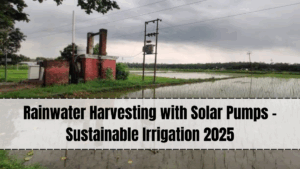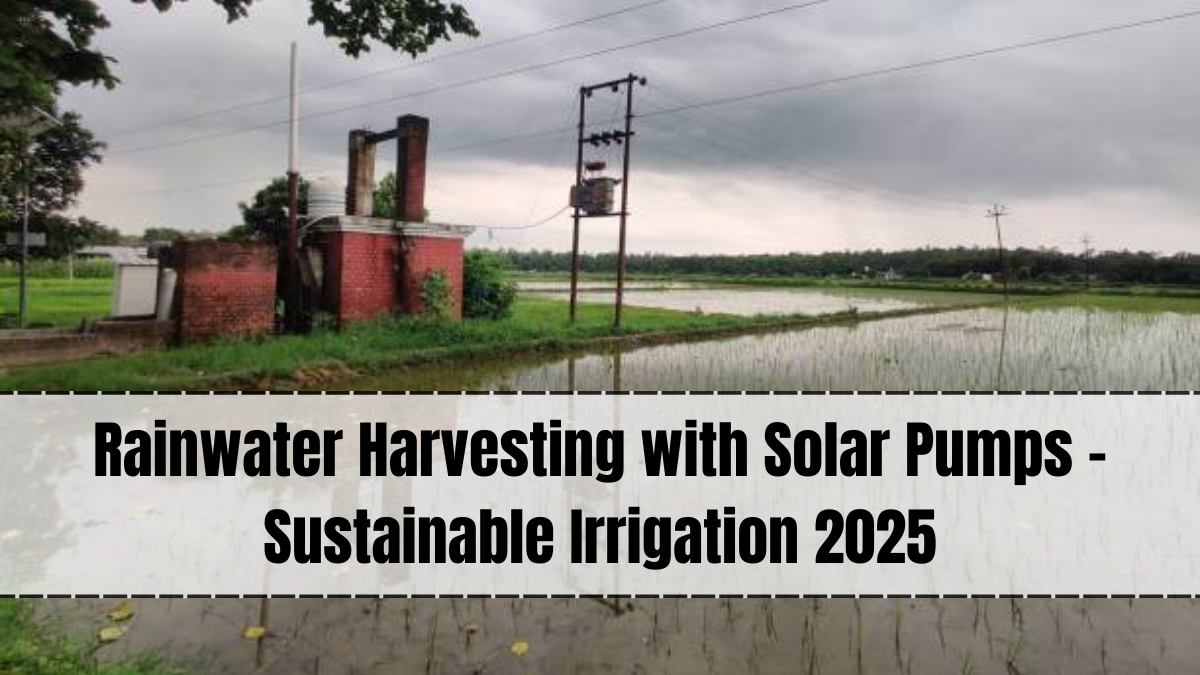In 2025, sustainable irrigation practices are becoming increasingly important as farmers face the combined challenges of climate change, unpredictable rainfall, and rising energy costs. One of the most impactful solutions gaining popularity is the integration of rainwater harvesting systems with solar-powered pumps. This approach not only ensures a reliable water supply for crops but also reduces dependence on fossil fuels and grid electricity. By capturing and storing rainwater and using clean solar energy to distribute it for irrigation, farmers can secure their agricultural productivity while contributing to environmental sustainability.

Why Combine Rainwater Harvesting and Solar Pumps
Rainwater harvesting is a centuries-old practice that involves collecting and storing rainwater for later use. When paired with modern solar pump technology, it becomes a highly efficient and eco-friendly irrigation solution. The harvested rainwater serves as a dependable water source during dry spells, while solar pumps provide the energy needed to move the water to fields, even in areas with unreliable electricity. This combination helps farmers become self-reliant, cuts operational costs, and minimizes the environmental impact of farming activities.
Benefits for Farmers and Communities
-
Reliable Water Supply – Farmers can irrigate crops even during prolonged dry seasons by using stored rainwater.
-
Cost Savings – Solar-powered pumps eliminate fuel expenses and reduce electricity bills.
-
Eco-Friendly Operations – The system reduces carbon emissions and conserves groundwater resources.
-
Improved Crop Yields – Consistent irrigation allows for better crop planning and higher productivity.
-
Community Resilience – Shared systems can benefit multiple farmers, especially in water-scarce regions.
How the System Works
The process starts with rainwater collection, typically from rooftops, greenhouses, or specially constructed catchment areas. The collected water is filtered to remove debris and stored in tanks or underground reservoirs. Solar panels installed nearby generate electricity to power water pumps, which draw water from the storage tanks and distribute it to irrigation systems. Farmers can use drip irrigation, sprinklers, or flood irrigation depending on crop requirements. Some systems include automated timers and moisture sensors to optimize water usage and prevent wastage.
Applications in Agriculture
Integrating rainwater harvesting with solar pumps benefits a wide range of agricultural activities. Smallholder farmers can use it to grow vegetables, fruits, and cash crops year-round. Livestock owners can ensure a steady supply of drinking water for animals. Greenhouse operators can maintain consistent watering schedules regardless of external weather conditions. The system is particularly effective in regions with seasonal rainfall, as it allows farmers to store water during monsoons for use in dry months.
Government and Policy Support
In 2025, many governments are actively supporting the adoption of rainwater harvesting with solar pumps through subsidies, training programs, and financing options. Initiatives such as the Pradhan Mantri Krishi Sinchayee Yojana (PMKSY) in India promote water conservation and efficient irrigation technologies. International organizations and NGOs also fund projects that combine renewable energy with water-saving practices, recognizing their potential to address both food security and climate resilience.
Case Studies and Real-Life Impact
In Rajasthan, where water scarcity is a major issue, farmer cooperatives have installed community rainwater harvesting systems linked to solar pumps. These systems have enabled farmers to cultivate crops even during severe droughts, boosting incomes and reducing migration to urban areas. In southern India, tea plantation owners use similar systems to ensure continuous irrigation for their crops, improving both quality and yield. These examples highlight how combining traditional water conservation with modern renewable energy can transform rural livelihoods.
Technological Innovations
The latest systems in 2025 incorporate smart technology to maximize efficiency. IoT-enabled pumps allow farmers to monitor and control irrigation remotely using smartphones. Solar panels are now more efficient and compact, producing higher energy output even in low-light conditions. Advanced water filtration systems extend the lifespan of storage tanks and reduce maintenance needs. Automated controllers adjust pumping schedules based on soil moisture levels, ensuring optimal water use and healthier crops.
Challenges and Solutions
While the benefits are clear, certain challenges remain. The initial investment cost for setting up rainwater harvesting infrastructure and solar pumps can be high, especially for small farmers. To address this, microfinance institutions and cooperatives offer low-interest loans and pay-as-you-go models. Maintenance of solar panels and pumps requires technical knowledge, which is being addressed through rural training programs. In regions with inconsistent rainfall, additional measures such as groundwater recharge pits and supplemental water sources can help ensure year-round availability.
Future Outlook
The future of rainwater harvesting with solar pumps looks promising as technology continues to evolve and costs decline. With climate change expected to intensify water scarcity in many parts of the world, this integrated system will become an essential tool for sustainable agriculture. Wider adoption could significantly reduce pressure on groundwater resources, lower carbon emissions from diesel-powered pumps, and increase food security for rural populations. By 2030, experts predict that this approach will be standard practice in many farming communities across Asia, Africa, and Latin America.
FAQs
How much water can be collected through rainwater harvesting?
The amount depends on catchment size and rainfall, but even small rooftops can collect thousands of liters annually.
Can solar pumps work on cloudy days?
Yes. While output may be reduced, battery storage and efficient pump technology ensure operation during low sunlight conditions.
Is the system expensive to set up?
Initial costs can be high, but subsidies, financing options, and long-term savings make it a cost-effective solution.
Can this system be used for large-scale farming?
Yes. Scalable designs allow for larger storage tanks and higher-capacity pumps to meet the demands of commercial agriculture.
Click here to know more.
